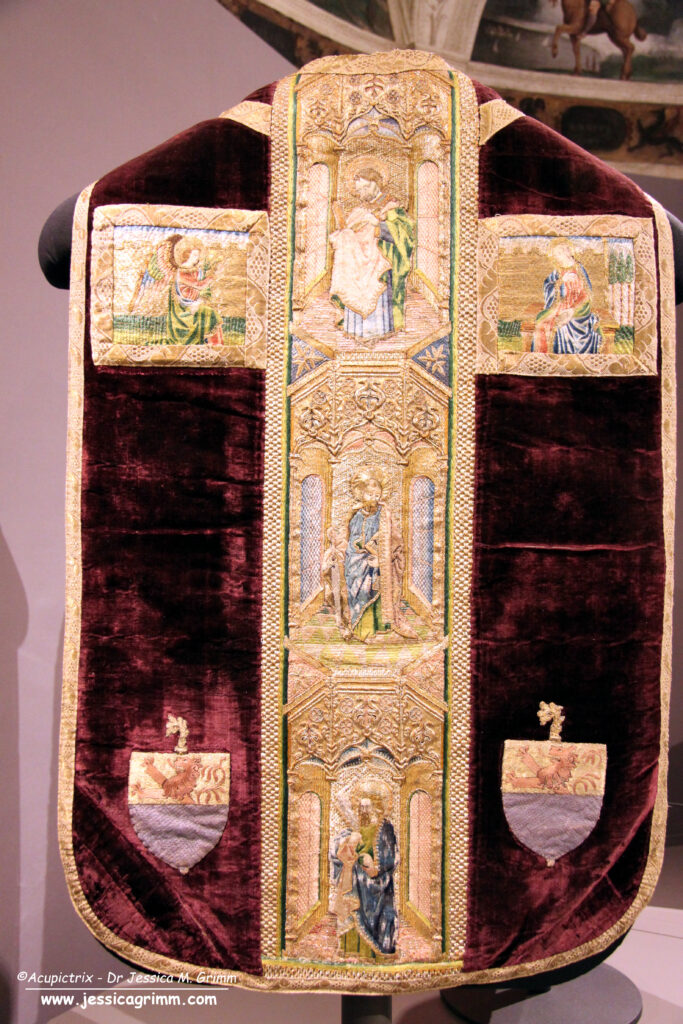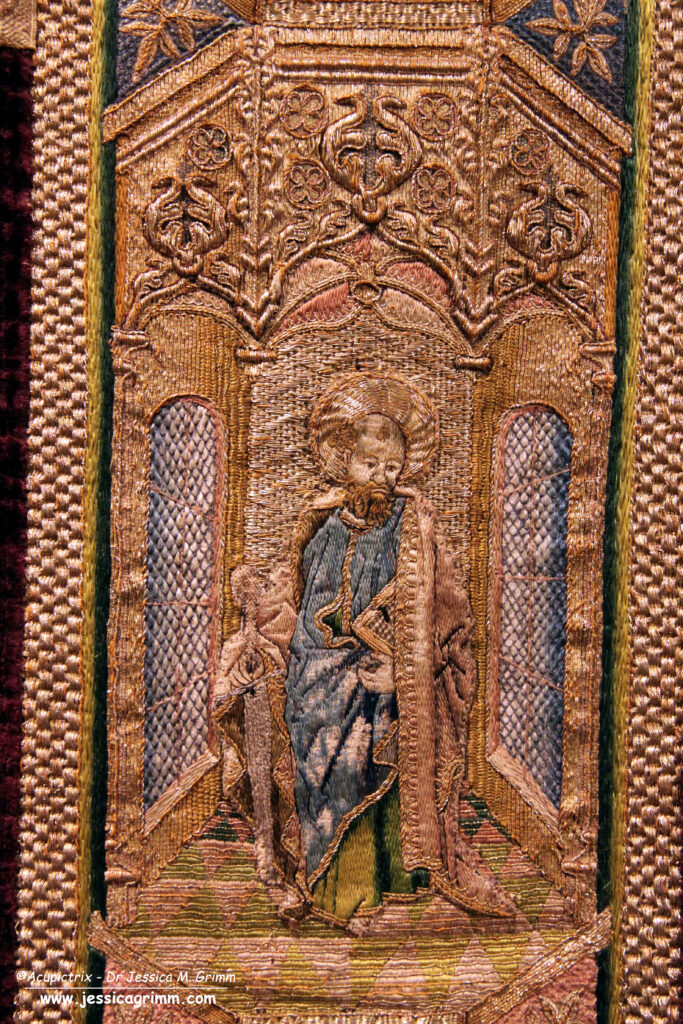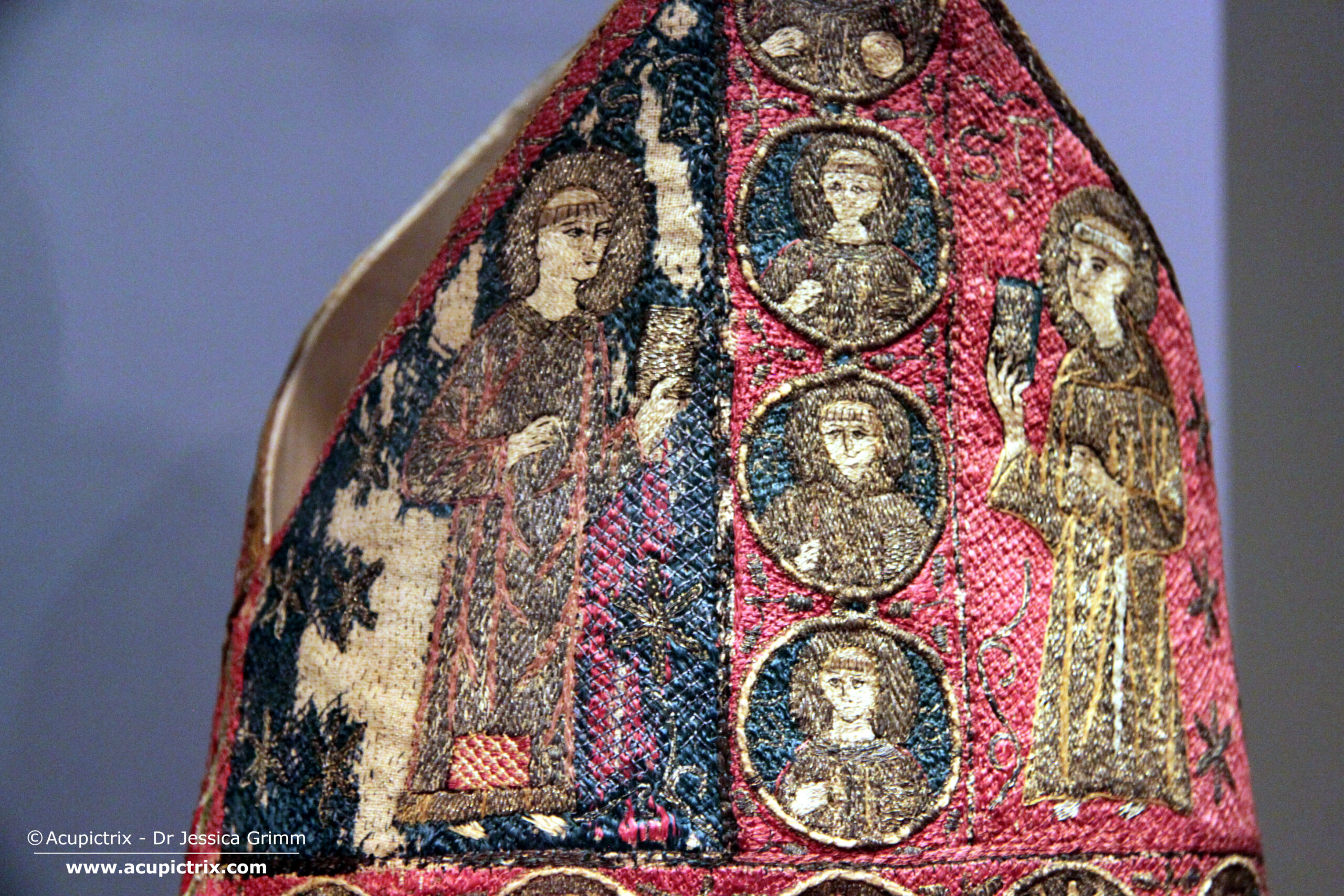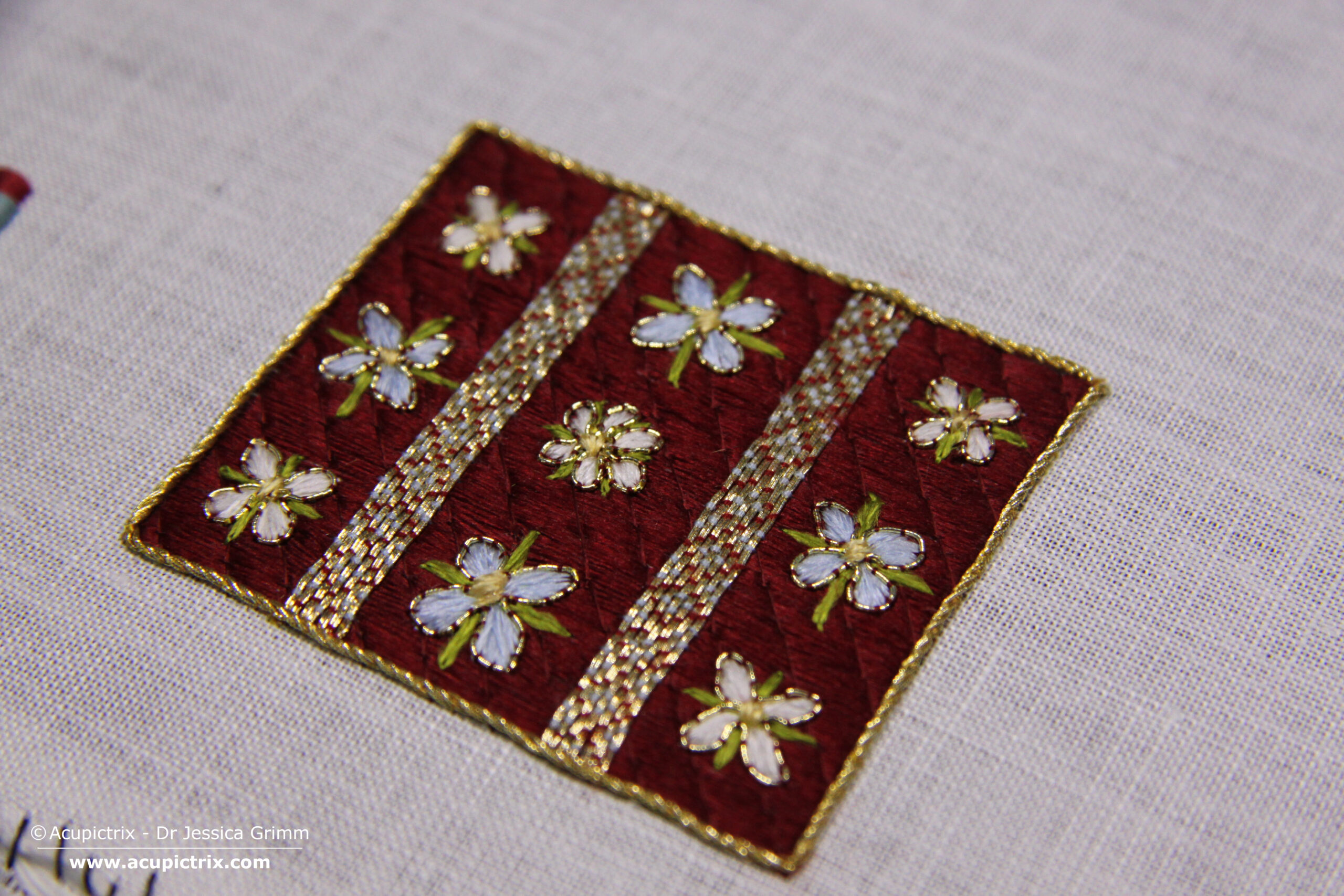By now, you probably know that chasing embroidered medieval vestments is kinda my thing :). Although I am fortunate enough to be able to travel regularly, a lot of my research happens behind a computer screen. Trailing through publications, especially the literature references, is how I find new-to-me pieces. And related information to these pieces. When I re-read the catalogue entry for a chasuble from Aosta Cathedral, Italy, that featured in my Advent Calendar, I decided to see if I could chase up the Italian references. A lovely antique dealer from Aosta sent me a hard-to-come-by book, and a trip to the Bavarian State Library in Munich provided copies of two further references (one contained another new-to-me piece; more on that in a future blog post!). So, let’s have a look at this lovely piece of Italian embroidery!

The chasuble kept at Aosta Cathedral, Italy and known as the DePrez chasuble, is an excellent up-cycling story. It contains orphreys from two different older vestments. The five Apostles (three on the back and two on the front) were made between AD 1470 and 1480 in the Aosta Valley. And then there’s the Annunciation scene spread over two orphreys. These were made a decade earlier in Central Italy. The coat of arms points to the DePrez family, who supplied two bishops to the see of Aosta: Uncle Antonio, AD 1444-1464, and Nephew Francesco, AD 1464-1511. We don’t know if these came from one of the two vestments from which the orphreys came. It might be that these were later added to elevate the chasuble in importance.

The orphreys with the Apostles are really high-quality late-medieval embroidery. The padded tracery of the architectural niche is fantastic. Zoom in on the inside of the acanthus leaves to see the clever shading. Added outlines with gold thread and twist make it appear very opulent, yet the embroidery techniques involved are incredibly simple.
The diaper pattern in the background is well-known in medieval embroidery. What is notable here is that it is worked over padding thread. Additionally, the gold threads run horizontally instead of vertically.
The figure of St Paul is also very well executed. The main technique used is a shaded version of encroaching satin stitch. The embroiderer did not aim to split their stitches as we do in modern silk shading. This was a far more orderly affair, not unlike modern Chinese silk embroidery. The hems of the different pieces of clothing have also been lavishly embellished with couched gold threads.
Amazingly, we know who was responsible for the design drawings of these orphreys. And we might even know who stitched them. Art historians traced the designs to Antoine de Lonhy (AD c. 1446-1490). He was a Burgundian painter, illuminator and glazier who worked in Toulouse, Barcelona and Savoy. He was active in the Aosta Valley when these embroideries were made. Furthermore, documentary evidence shows that he supplied an embroiderer in Barcelona with design drawings. As to the embroiderer, there’s a Jacobus Matei, Magister Broderius, in Aosta, paid several times around AD 1440 by the Cathedral of Aosta. This likely proves that high-end embroidery was made locally. Maybe Jacobus was still active and working for the Cathedral when Antoine drew the Apostles. Or maybe Jacobus passed on his trade to his children, and one of them was responsible for the orphrey of the Apostles?
This is my last blog post of the year! I am taking a break over Christmas and will use the time to plan the schedule for next year (blogs, Medieval Embroidery Study Group meetings, and classes). Thank you very much for being such a loyal audience for my medieval goldwork adventures. I wish you a Merry Christmas and all the best for 2025! See you back here on January 6th, 2025.
Literature
Bovenzi, G.L., 2013. Introduzione, in: Castelnuovo, E., Crivello, F., Vallet, V.M. (Eds.), Cattedrale di Aosta Museo del Tesoro. Catalogo. Cattedrale di Aosta Museo del Tesoro, Aosta, pp. 413–417.
Orlandoni, B., 1998. Artigiani e Artisti in Valle D’Aosta dal XIII secolo all’epoca Napoleonica. Priuli & Verlucca, Torino.
Prá, L. Dal, Carmignani, M., Peri, P. (Eds.), 2019. Fili d’oro e dipinti di seta: Velluti e ricami tra Gotico e Rinascimento. Castello del Buonconsiglio, Trento.



0 Comments